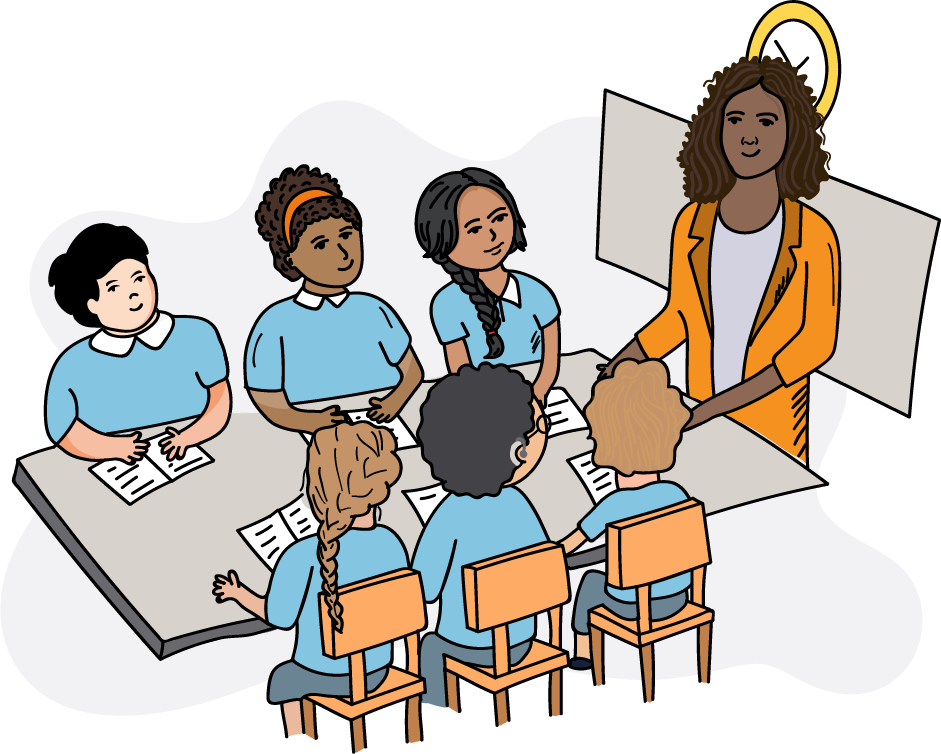Blog: EAL Children and the Early Years Sector – The Best Start?
In this blog, Professor Claudine Bowyer-Crane and Dr Silke Fricke look at the achievement gap for EAL pupils in early years, exploring the reality behind the misleading data and what this means for policy.
There is currently a great deal of interest in the future of the early years sector. This is clearly a priority as early experiences shape later life chances. However, little attention has been paid in these discussions to children in this age group who speak English as an Additional Language (EAL).
Many of these children face the challenge of adjusting to early years settings and schools while also learning English. Although reports suggest that the gap between EAL learners and their monolingual peers closes over time, evidence suggests that for some children a performance gap remains, particularly for children with low levels of English language proficiency.
Teachers we’ve spoken to as part of our research are also worried about this, stating that they had significant concerns about children learning EAL, as well as children from deprived backgrounds and children with special educational needs (SEN).

What does the data tell us?
In our own research, we looked at the Early Years Foundation Stage Profile (EYFSP) of children learning EAL in the year following the first national lockdown and compared this to their monolingual peers as well as to a pre-pandemic national sample. While non-mandatory in the academic year 2020/21, our schools were still carrying out the EYFSP and shared data for over 3000 children. Our results suggested that children learning EAL were significantly impacted by COVID-19.
- 61.5% of children learning EAL achieved at least expected levels in Communication and Language compared to 76.5% of their monolingual peers.
- 53.7% of children learning EAL achieved expected levels in Literacy compared to 63.9% of their monolingual peers.
- 50.9% of children learning EAL in our sample achieved a good level of development compared to 61% of their monolingual peers.
- 50.9% of children learning EAL achieved a good level of development in the year 2020/21, compared to 67% in the national cohort 2018/19.
More recently, we began a longitudinal study exploring the impact of lockdown on children in Reception, Year One and Year Two. We collected data on a language measure that included receptive and expressive vocabulary, sentence repetition and listening comprehension. Our regression analysis shows that whether a child has English as an Additional Language is a significant predictor of performance on the language measure, and, to date, a smaller proportion of children learning EAL perform as expected compared to their monolingual peers.
The most recent EYFSP data show that this is still the case. According to the Department for Education (DfE), 70% of children learning EAL are reaching expected levels in Communication and Language compared to 82.3% of children whose first language is English. In Literacy, these figures drop further with 62.5% of children learning EAL achieving expected levels compared to 70% of children whose first language is English.
What does this mean for policy and practice?
If children who are learning EAL do not reach the English language proficiency required to fully engage with the school curriculum, this has the potential to hinder their progress on statutory assessments as they make their way through primary school. Indeed, 57.2% of children learning EAL achieve a good level of development in the EYFSP compared to 67.1% of their monolingual peers, and in Key Stage One SATS, 65% of EAL learners achieve expected levels in reading compared to 70% of their monolingual peers.
It is important to note that the complexity of this cohort is not captured by the categorical labelling of a child as EAL. The language proficiency of those falling into this category varies greatly, with some children being fluent in multiple languages including English and others having little or no English.
In a school system where all children are tested in English...these assessments do not take account of a learner’s ability if tested in their own language and are therefore inherently biased towards English language speakers
Yet in a school system where all children are tested in English, like ours, these assessments do not take account of a learner’s ability if tested in their own language and are therefore inherently biased towards English language speakers, hindering opportunities for children learning EAL to perform to their full potential. Early years educators and teachers need to be equipped with the tools and skills needed to identify those children who may be in need of additional support. There is little policy guidance available from the DfE to help educators support young English language learners. Educators have to rely on third sector organisations such as The Bell Foundation and NALDIC to support their practice.
The percentage of children learning EAL is increasing, and the needs of these children must be addressed. We feel strongly that the DfE, in considering changes to the early years sector, consider the specific needs of children learning EAL to address the current achievement gap and ensure it does not widen.